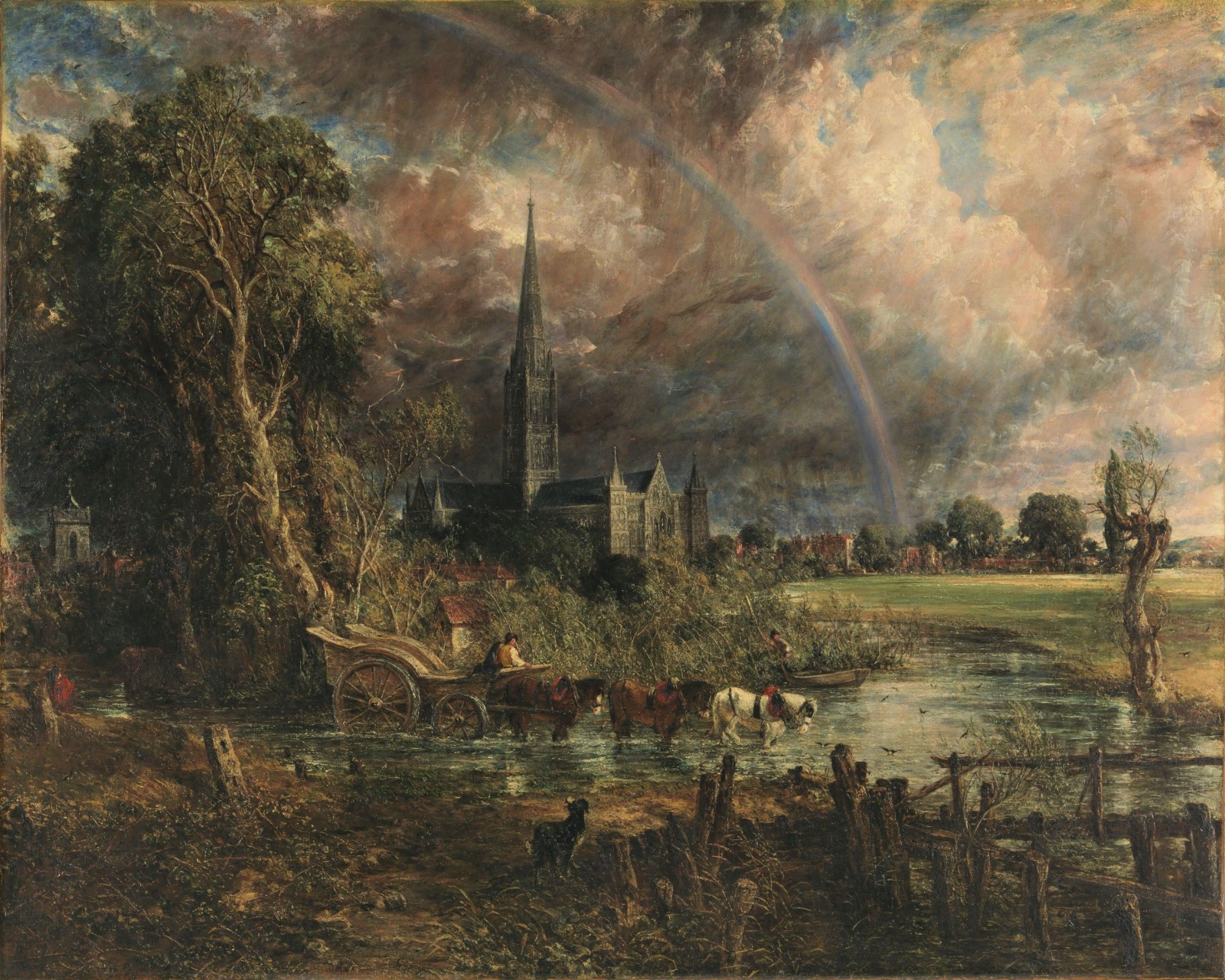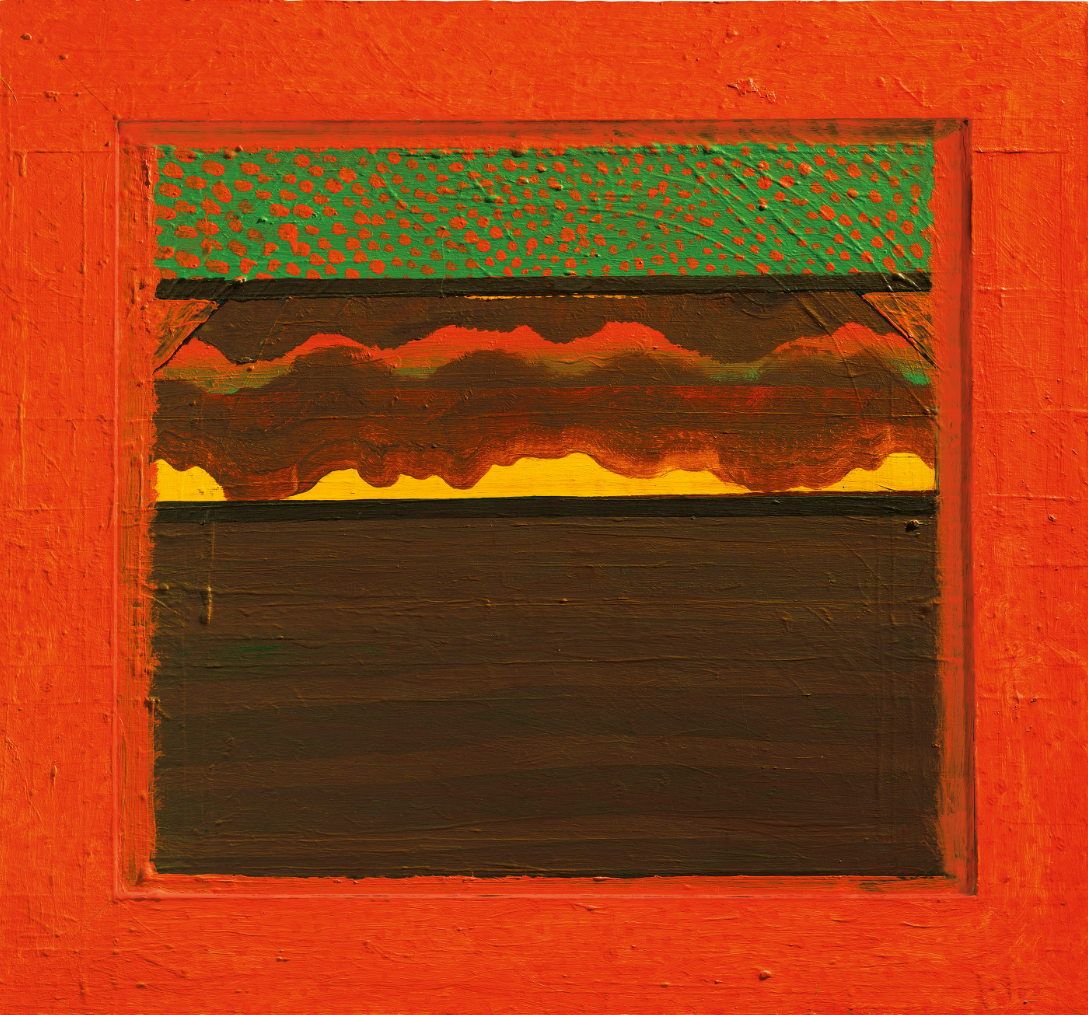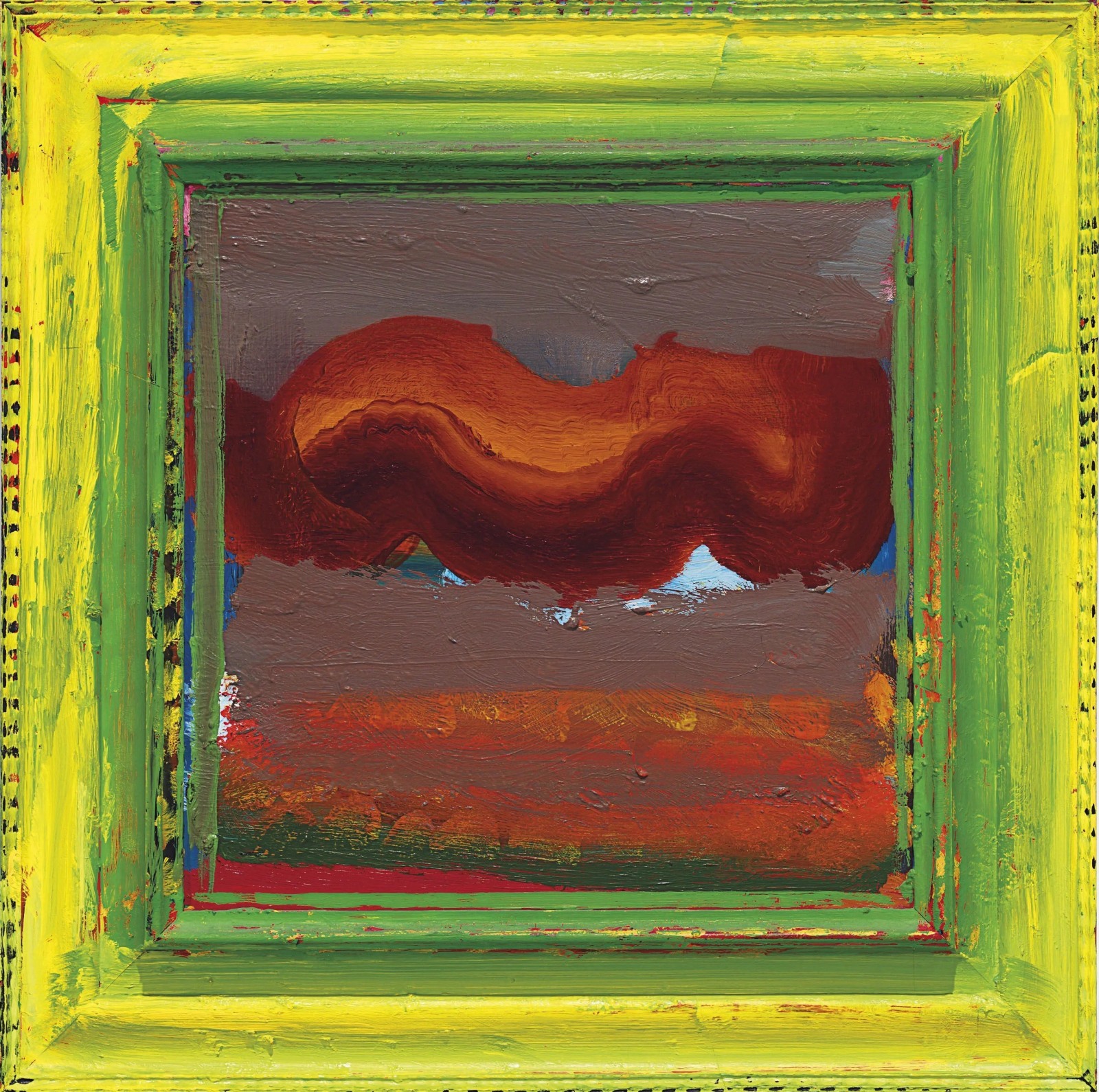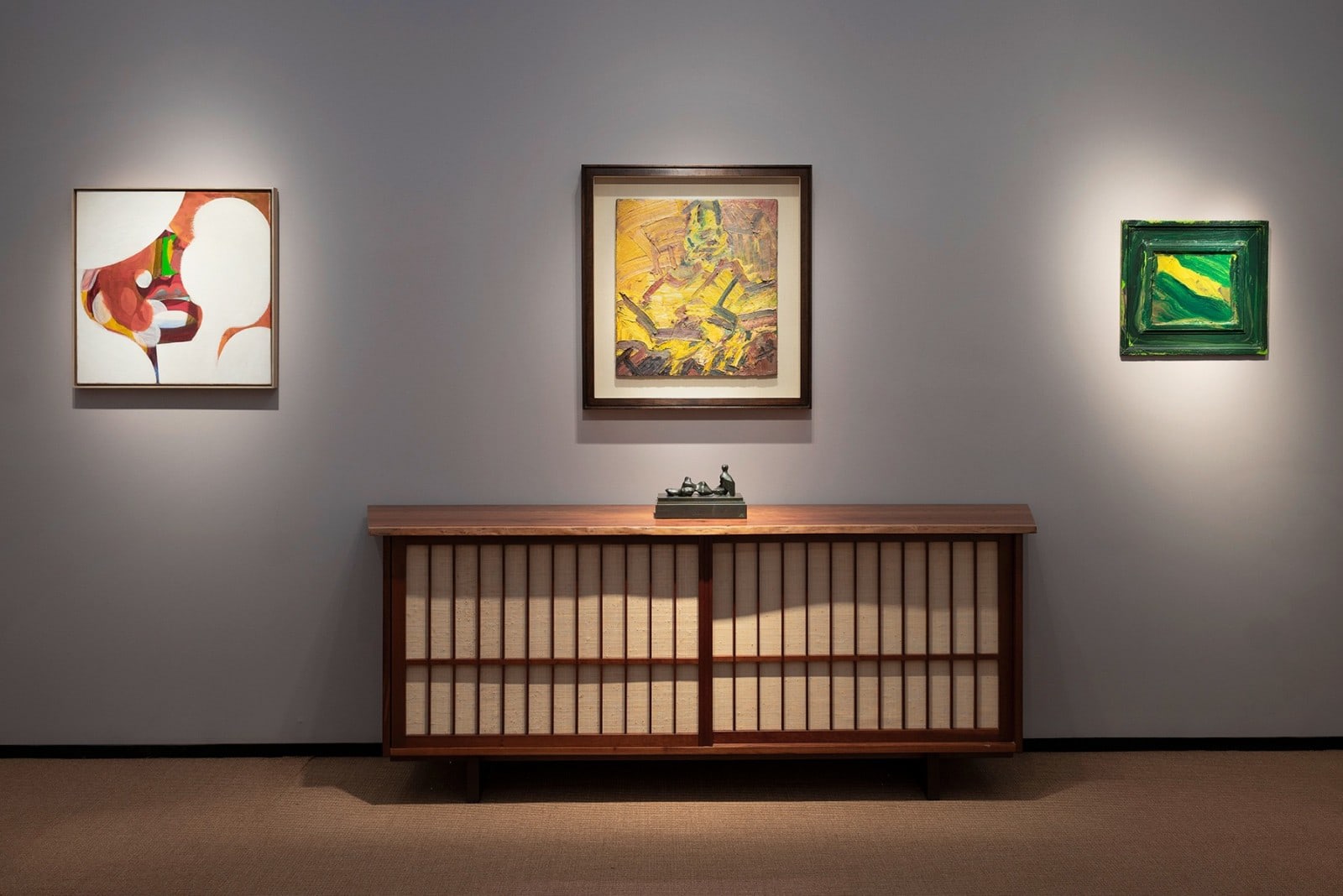In his paintings, Howard Hodgkin frequently brought together sensations of longing and atmospheric renderings of weather. InSight considers a work by Hodgkin currently displayed on Piano Nobile’s stand at Frieze Masters.
InSight No 178
Howard Hodgkin, Small Rain, 1998-99
The complex climate of the British Isles has stimulated an enduring cultural preoccupation with the weather. Although he frequently lamented the parochialism of his home country, Howard Hodgkin (1932–2017) was not immune. One of his ancestors, the meteorologist Luke Howard (1772–1864), codified the enduring system by which clouds are categorised, and the connection was likely poignant to Hodgkin. For the bicentenary of John Constable’s birth in 1976, Hodgkin’s contribution to a commemorative portfolio of prints was a cloudy lithograph entitled ‘For Luke Howard’. A significant number of his paintings evoke weather events, times of day and atmospheric conditions, along with related moods or scenarios. Precipitation especially was a recurring theme and rainbows a recurrent motif.

Early in his career, Hodgkin was overwhelmingly concerned with interior spaces and the social encounters that unfolded within them. He made comparatively few paintings in the sixties and seventies that address the outdoors. And when he did, in works such as Garden (1960–62) and Sunshine (1966–67), he used rigorous structures and patterns akin to those that appear in contemporaneous portraits and interiors. Some of Hodgkin’s earliest paintings about weather and atmosphere were responses to the fantastic heat and seasonal deluges he encountered in India. After visiting for the first time in 1964, he travelled there regularly for the rest of his life, and the tropical climate of the Indian subcontinent fostered paintings such as Bombay Sunset (1972–73) and Monsoon in Bombay (1975–77). The latter is possibly the earliest instance of rainfall in his work.

As Hodgkin’s style and painting techniques began to change in the eighties, his interest in depicting complex European climates began to develop. Using wide brushes, autographic brushwork, painted frames and an accumulation of translucent layers, Hodgkin developed an idiom ideally suited to the evocation of weather. Many of his paintings from this period onwards suggest veils of cloud, gentle mists, driving downpours, shrouded horizons. In paintings of Venice especially, including Venice Rain (1984–87), Venice in the Autumn (1986–89) and Venice Sunset (1989), the evocation of light, air, water and atmosphere was of central importance.

Hodgkin’s work was always motivated by some specific subject, but he seldom elaborated about the memory or scenario that was evoked in a painting. Although he resisted the interpretation of his work, the titles of his paintings sometimes provide elliptical disclosures. Especially from the nineties onwards, some of his paintings bore apparently simple, descriptive titles: Alpine Snow (1997), Fog (2002), Snowfall (2010). More often, Hodgkin made complex use of simple language. His sources included both literature and commonplace idioms. Two paintings made several years apart, Red Sky at Night (2001–11) and Red Sky in the Morning (2016), apparently invoke the colloquial English expression ‘red sky at night, shepherd’s delight; red sky in the morning, shepherd’s warning’. Other paintings such as Dirty Weather (2001) and Rain on the Pane(2009) have titles that function both as superficial description and as mildly suggestive hints.
Hodgkin gave two very different paintings the title Small Rain, the first made in 1990 and the second in 1998–99. An earlier large-scale painting was called Rain, a watershed in the artist’s career that demonstrated new confidence and ambition, and although it is visually unrelated to the two subsequent works, both Small Rain paintings were literally smaller; their titles may imply a response to the earlier painting. More significantly, the phrase ‘small rain’ appears in a Middle English love lyric called Western Wind:
Westron wynde when wyll thow blow?
the smalle rayne downe can Rayne.
Cryst, yf my love were in my Armys
And I yn my bed Agayne!
The poem marries together several persistent thematic concerns in Hodgkin’s work. Besides a preoccupation with weather and atmosphere, much of his work emanates a profound sense of nostalgic longing. This was the inevitable consequence of remembering piquant sensory or emotional experiences from the isolation of the artist’s studio. The poem also makes a poignant connection between sorry weather and frustrated desire. Many of Hodgkin’s paintings make more or less veiled references to private sexual experiences, and the generalised language of his painterly idiom—spots, palms, bars—helped the artist to translate the incommunicable. In Hodgkin’s second and last painting called Small Rain, the subject is ambiguous. A trace of textures and colours from earlier stages of painting shows through at the surface in places. The moulded frame is painted in a contrasting hue of green, which contains and sets apart the activity at the centre of the painting. The applications of paint are tangible and eloquent, even as the experiences they express remain incomprehensible to all but the artist.

Images:
John Constable, Salisbury Cathedral from the Meadows, 1831, Tate, London
Howard Hodgkin, Bombay Sunset, 1972–73, Private Collection © Estate of Howard Hodgkin
Howard Hodgkin, Venice Rain, 1984–87, Private Collection © Estate of Howard Hodgkin
Installation photograph of Small Rain by Howard Hodgkin on Piano Nobile's stand at Frieze Masters 2025
